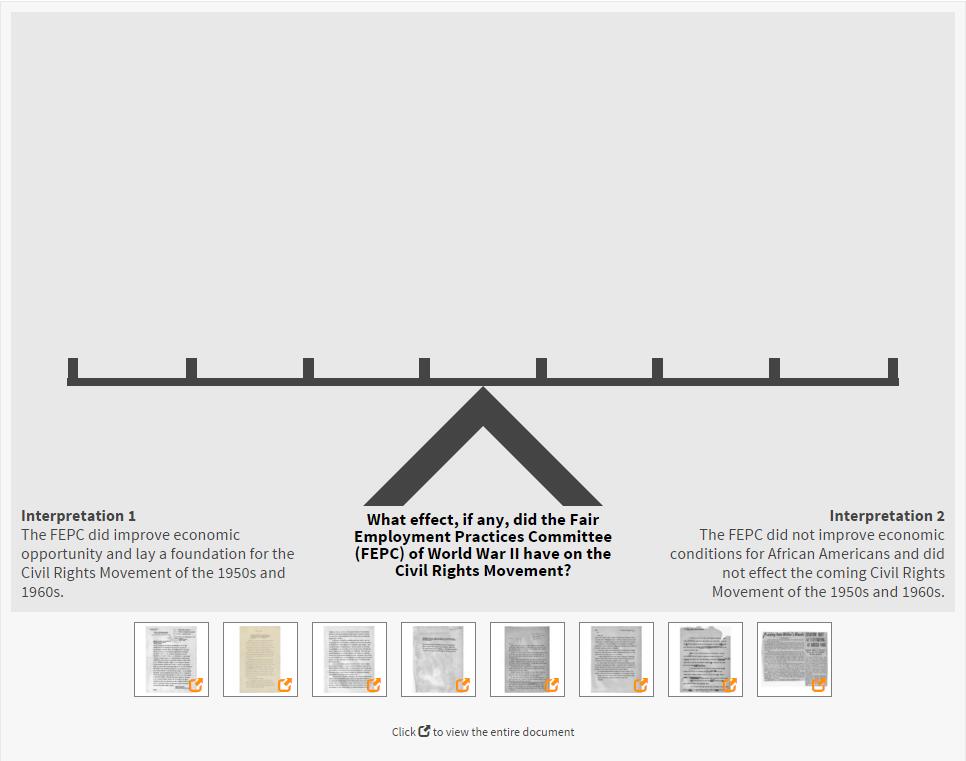Confronting Work Place Discrimination on the World War II Home Front
Weighing the Evidence

About this Activity
- Created by:National Archives Education Team
- Historical Era:The Great Depression and World War II (1929-1945)
- Thinking Skill:Historical Analysis & Interpretation
- Bloom's Taxonomy:Evaluating
- Grade Level:High School
In this activity, students will analyze primary sources and evaluate the degree to which they demonstrate Civil Rights advances following President Franklin Delano Roosevelt's 1941 Executive Order providing equal opportunity in defense industries, and the subsequent establishment of the Fair Employment Practices Commission (FEPC).
Students will place documents on a scale according to their weight as evidence of advancement or ineffectiveness of the FEPC. They will then formulate their own position on the effectiveness of the executive order and commission, and write out their reasoning and evidence for their formulated positions.
https://docsteach.org/activities/student/confronting-work-place-discrimination-on-the-world-war-ii-home-frontStudents will place documents on a scale according to their weight as evidence of advancement or ineffectiveness of the FEPC. They will then formulate their own position on the effectiveness of the executive order and commission, and write out their reasoning and evidence for their formulated positions.
Documents in this activity
- Associated Press news release relating to the white shipyard workers strike at the Alabama Dry Dock and Shipbuilding Corporation
- Draft news release relating to the recent disturbances in Mobile at the Alabama Dry Dock and Shipbuilding Corporation
- Executive Order 8802 to Prohibit Discrimination in the Defense Industry
- Newspaper clipping relating to the disturbance at the Alabama Dry Dock and Shipbuilding Co. between white and negro employees
- Resolution of the Committee statement from Monseignor Francis J. Haas, Chairman of the reorganized Fair Employment Practices Committee
- Statement from Dr. B.F. Ashe, Regional Director of the War Manpower Commission, concerning the recent race and labor disturbances at the Alabama Drydock and Shipbuilding Corporation in Mobile, Alabama
- Telegram relaying the announcement regarding pay discrepancies
- United Press release relating to the walkout of white welders at the Pinto Island shipyards at the Alabama Dry Dock and Shipbuilding Corporation




